What is Shiso: Japanese Best Traditional Herb!
Linh Le
Posted on March 15, 2023
Share:

Although the shiso or perilla leaf originated in China, it has grown wild in Japan since ancient times. However, more people cultivated it during the Heian period (794-1185). Shiso was widely known as a medical herb in China, but it is a traditional herb primarily used in cooking in Japan!
Difference between oba and shiso
Perila in Japanese is shiso or oba. When distinguishing between the buds and leaves of green shiso, the bundled leaves were named “Oba” and shipped to the market, which is how they came to be called by two different names: shiso and oba. Today, shiso has become the generic name for plants in the shiso family, and oba is the product name in supermarkets.
Types of shiso
Green shiso. also known as ao shiso or oba, is characterized by its excellent, refreshing aroma; both sides of the leaves and stems are green. As a savory vegetable, the Japanese used it as a condiment and an accent in cooking. Farmers grow green shiso in greenhouses nowadays, so It is also available all year round.
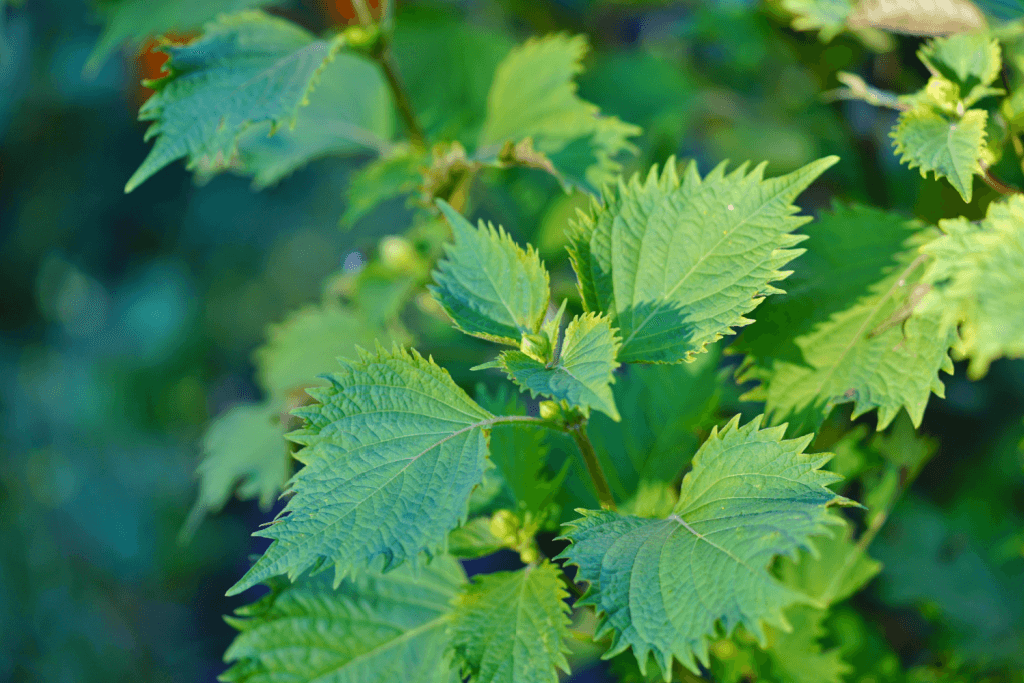
On the other hand, red shiso has both sides of the leaves being dark reddish-purple. In some ways, the aroma is similar to green shiso’s, but it’s more bitter. Even though people don’t eat it raw, they use it as natural coloring or flavoring.
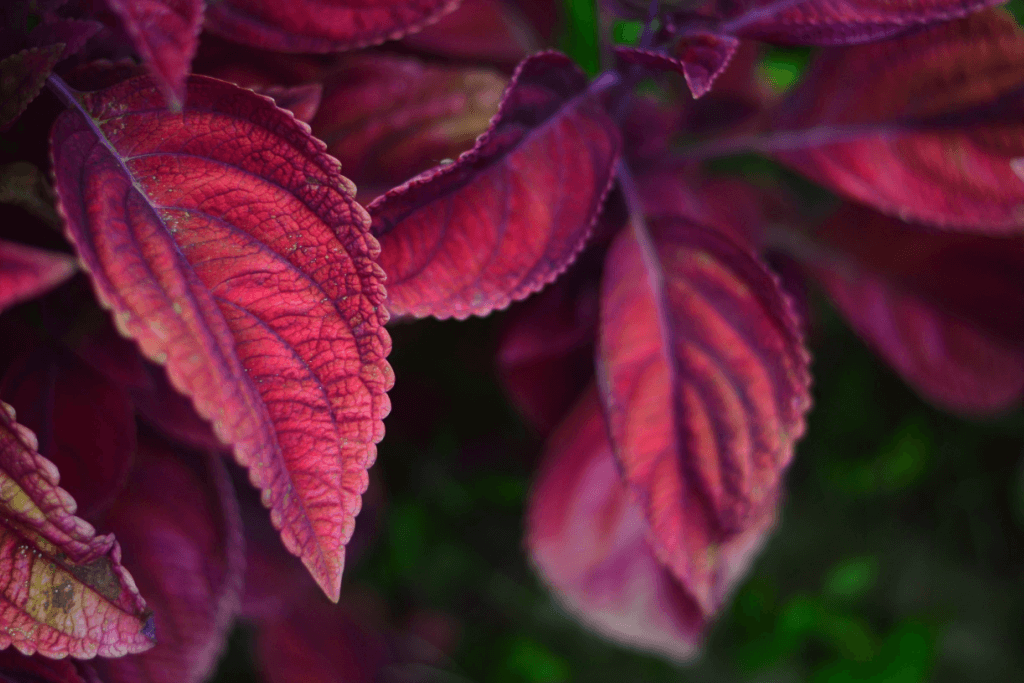
They most commonly use it for pickled plums (umeboshi). When dried, people use it to make yukari, a traditional Japanese seasoning for rice, salads, or pasta. The season for red perilla leaf is from June to August.
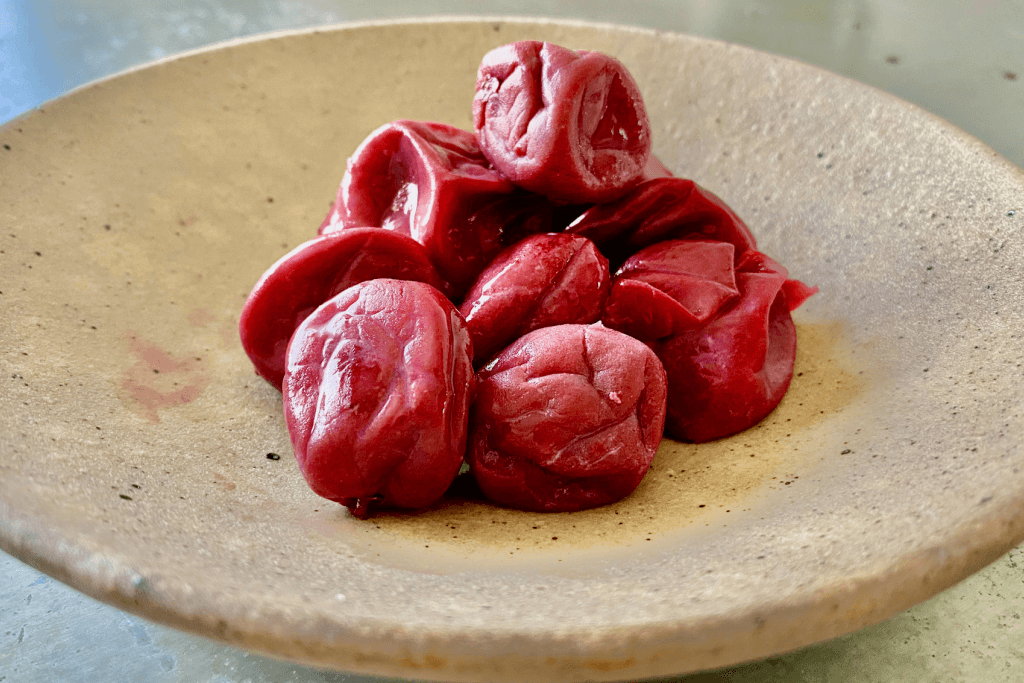
Need some traditional Japanese sweets and snacks to accompany tea in your leisure time? Check out Sakuraco! Sakuraco sends the best Japanese snacks, sweets, and tea right to your door so that you can enjoy a fun teatime at home!

How to store shiso
Perilla leaf is susceptible to dryness and quickly becomes damaged from losing water. You can store it in vegetable storage or a freezer to prolong its flavor. If you plan to use it within a week, you can wrap shiso in moistened kitchen paper and then a layer of plastic wrap, and lastly, store it in the vegetable compartment of your fridge. It will lose its coloring and flavor in the direct cold.
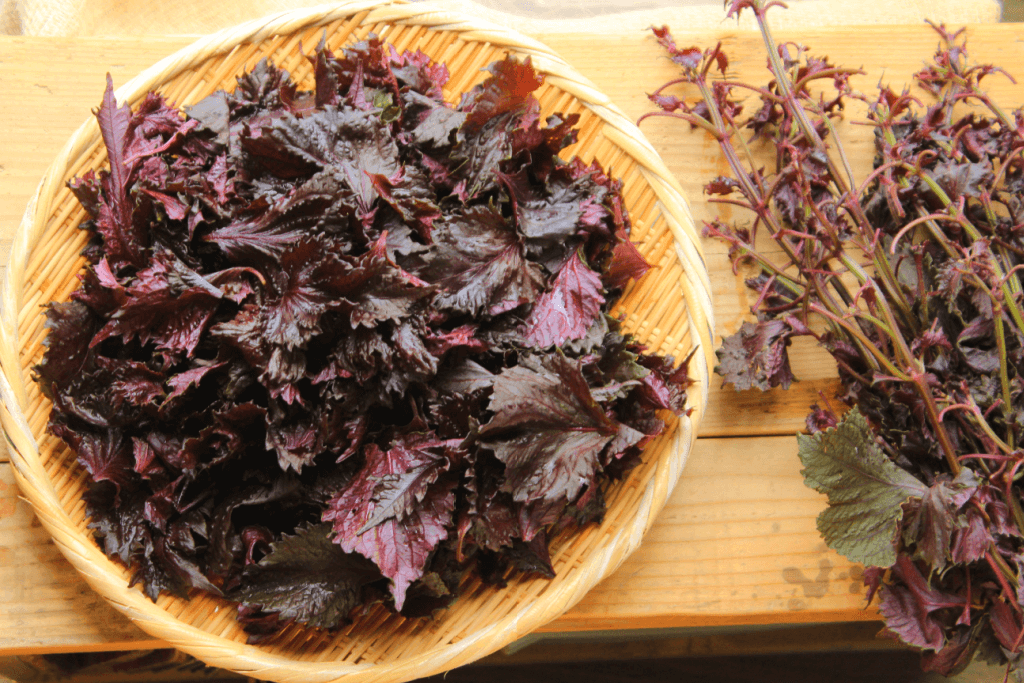
Otherwise, if you want to store it in the freezer, dry it out, cut it into chunks or shreds, and then place it in an airtight freezer bag or container. You should avoid placing the leaves in close contact with each other so that you can pick up only the portion you need for cooking. When frozen, the leaves may turn a slightly darker green, but it’s still viable as a condiment. If you are concerned about discoloration, use it with other ingredients to make dumplings or hamburger steak.
How to use shiso in cooking
Not only is perilla delicious, but it also has many health benefits. Thanks to its sterilizing effects, perilla is often used as a condiment or garnish for sashimi. Perilla is also suitable for appetite stimulation, so Japanese people love adding it to many traditional dishes.
As condiments
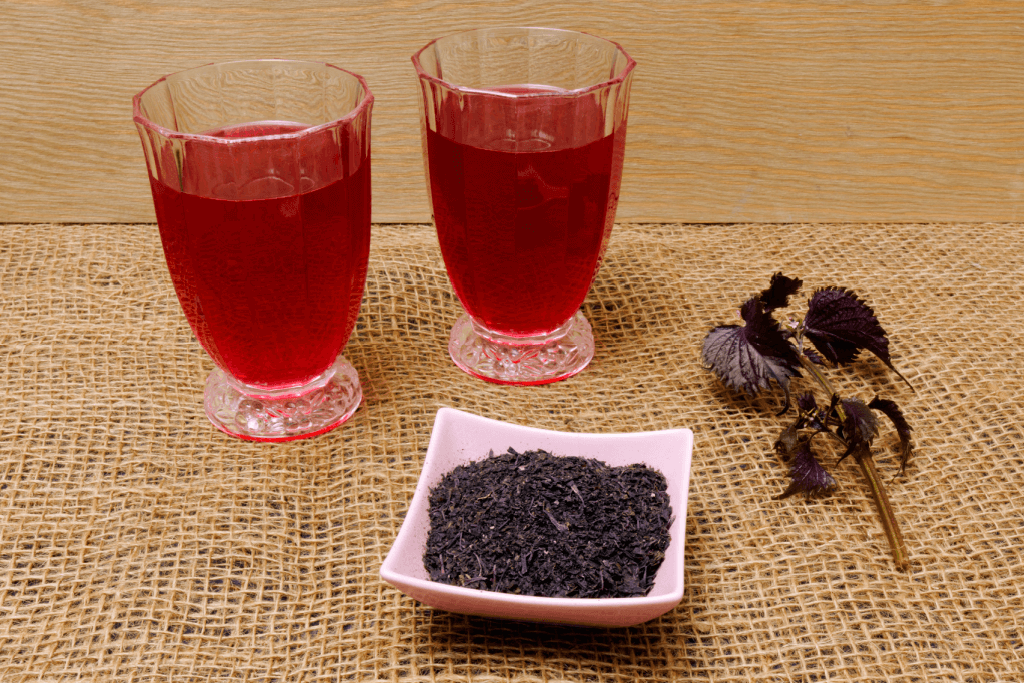
You can easily enjoy it by stacking several sheets, cutting them in half, rounding them up, and shredding them all at once. We also recommend the condiments mixing perilla leaves with other vegetables such as green onions, myoga ginger, and ginger. Moreover, it can last in the refrigerator for 3 to 4 days. Using it for cold noodles, somen noodles, and salads are very convenient.
Preservation dish
Shiso miso
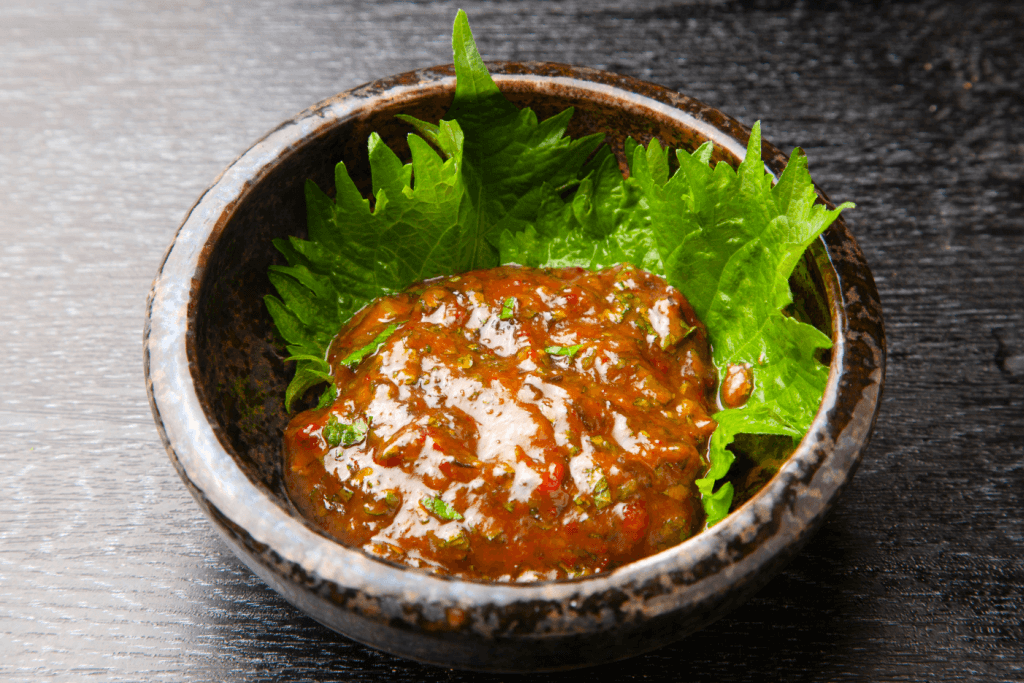
This simple dish goes well with rice perfectly for any season, especially in summer when your appetite declines. With soybean-based miso, shredded perilla, ginger, or garlic chopped finely, you can mix everything and simmer the mixture at low heat in a pot. Adding katsuobushi at the end can even make it richer.
Shiso Genovese
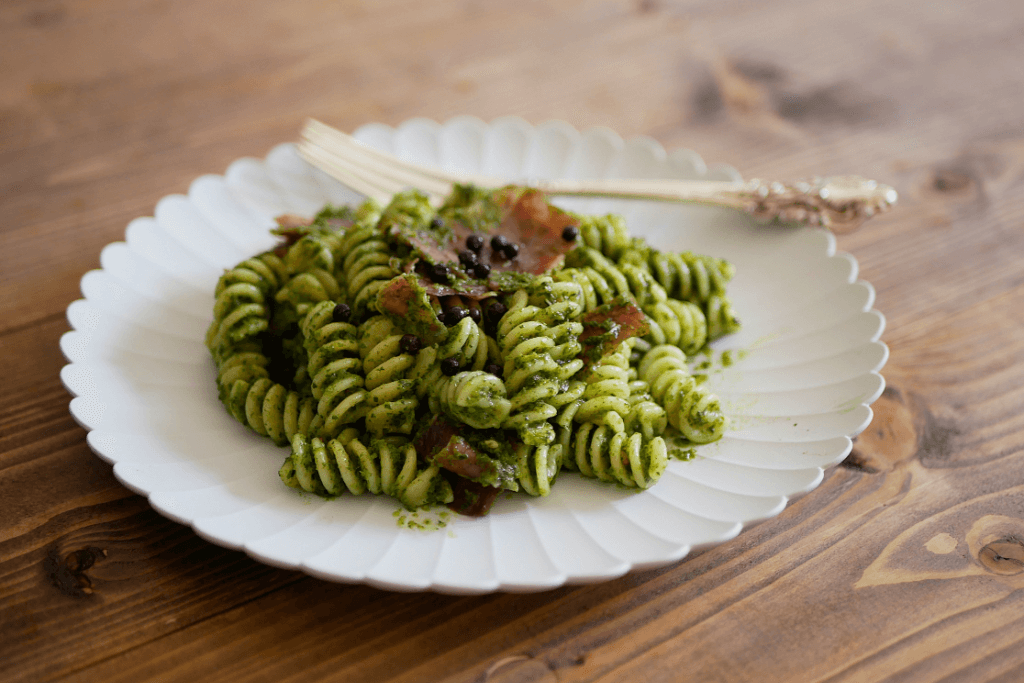
As the name suggests, this sauce uses perilla leaves as the main ingredient and other seasonings such as minced garlic, sesame, lemon juice, and salt. It is so simple that you must put everything in a blender and let them mix. It goes well with pasta, meat, or even fish.
Whitebait and shiso furikake
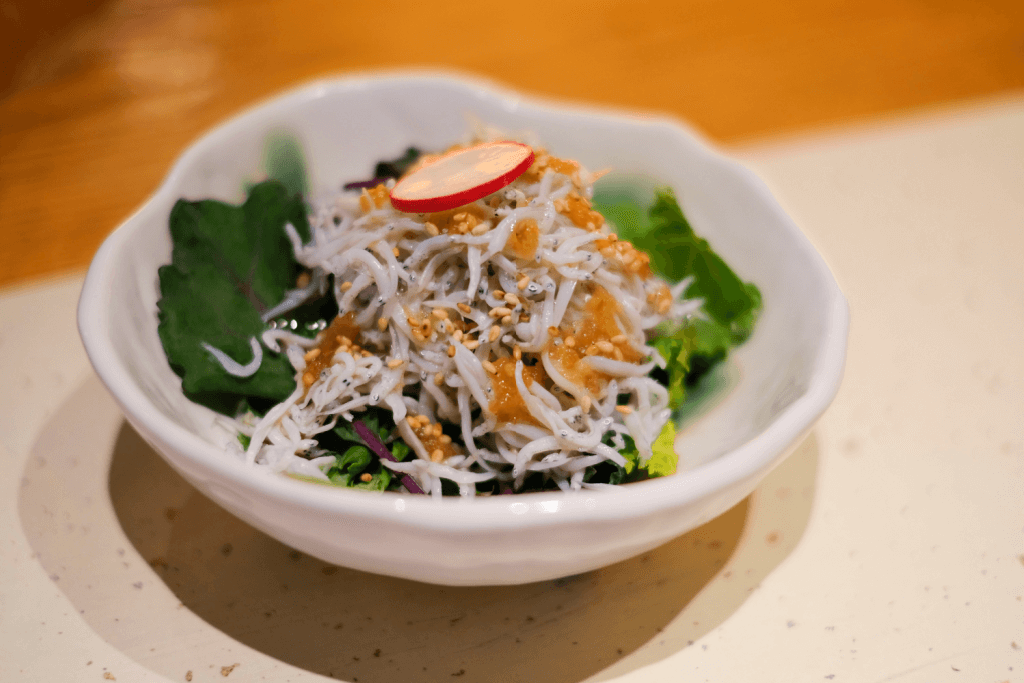
Another delicious dish you can enjoy with rice is whitebait and shiso furikake. Stir-frying whitebait with ginger, seasoning with mirin and soy sauce, and lastly adding chopped perilla, and you can enjoy it for three to four days when kept in the fridge.
Other Japanese dishes
Perilla goes with salty meat dishes like chicken, pork, beef such as tsukune, rotisserie chicken, hamburger, or light dishes such as salad or tofu. You can enjoy a refreshing aftertaste without getting tired of any menu with plenty of perilla on top.
Moreover, perilla goes well with fish dishes like sea bream and cod. There are just so many ways to make Japanese dishes with it. Have you ever tried it before? If yes, what kind of Japanese dishes with shiso that you like most? Please share with us in the comment below!

Discover authentic flavors with Sakuraco
Get Sakuraco 

Discover authentic flavors with Sakuraco
Get Sakuraco 
Related Articles

Hotels in Japan: Best Ones to Visit!
Japan is packed with hotels that promise unforgettable experiences, blending world-class service, jaw-dropping views, rich history, and a dash of the country’s unique traditional flair!

Hanten: The Ultimate Winter Coat from Japan!
Hanten, offer practicality and are symbols of traditional Japanese fashion, alongside the famous kimono. Join us as we explore hanten and some other beloved Japanese winter jackets!

What is a Japanese Wedding Like? A Look Into Shinto Rituals
A Japanese wedding is a beautiful example of how the country combines ancient rituals with modern influences. A traditional ceremony often revolves around Shinto practices, symbolizing purity, harmony, and good fortune. But, over time, couples in this country have also embraced Western weddings.

Japanese Calendar: What Are Microseasons?
The Japanese calendar includes many beautiful events, some popular globally and others less known. Kō (microseasons) were once celebrated but replaced by Western seasons


